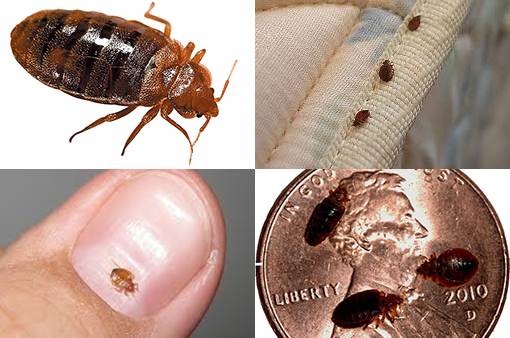Exploring the Science Behind Bed Insect Warmth Treatments as a Sustainable Parasite Monitoring Approach
One such method that has actually gained traction in recent years is the use of heat treatments to combat bed insect invasions. The ins and outs of how warm successfully eliminates bed bugs and the broader implications for sustainable pest management practices make this a subject worth checking out better.
Bed Bug Heat Treatment Process

Thermal Death Point for Bed Bugs
Exposing bed bugs to elevated temperatures past their thermal tolerance array is critical for accomplishing reliable eradication in heat therapy processes. The thermal death factor for bed bugs refers to the temperature level at which these bugs can not survive. Research study suggests that bed pests start to die when exposed to temperature levels above 113 ° F(45 ° C) for a sustained duration. As the temperature level enhances, so does the death rate of bed bugs. At around 118 ° F(48 ° C ), bed insects start to die swiftly, with a mortality rate of virtually 99% within mins of exposure. This shows the level of sensitivity of bed pests to high temperature levels and highlights the effectiveness of heat therapies in eliminating infestations. By reaching and preserving temperatures over the thermal fatality point for bed insects, bug administration experts can make sure detailed removal of bed bug populaces, consisting of hard-to-reach areas where chemical treatments may be less reliable. Recognizing the thermal death point for bed bugs is important for applying successful warm therapy techniques and accomplishing lasting pest monitoring results.
Advantages of Heat Treatments
Having actually established the critical thermal fatality point for bed pests, it is necessary to currently check out the substantial benefits that warm treatments use in efficiently eliminating these durable insects. One of the main advantages is that warm can penetrate deep into cracks and holes where bed insects conceal, guaranteeing that even the most hard-to-reach locations are heated up to dangerous temperatures.
Furthermore, warm treatments are ecologically pleasant and safe, making them a lasting insect management method. Unlike chemical pesticides, warm treatments do not leave unsafe residues that can position threats to human health and wellness or the atmosphere. This facet is particularly crucial in sensitive atmospheres such as health centers, colleges, and suburbs where chemical use might not be preferable.
In addition, warmth treatments have a high success rate in getting rid of bed insect problems in a solitary therapy, minimizing the requirement for several brows through and reducing interruption to passengers. This performance not just saves time and cash but additionally supplies comfort to those handling bed bug issues.
Effectiveness of Warmth Treatment

Warmth therapies have the included advantage of eliminating bed pest eggs, which are typically immune to traditional chemical treatments. In general, the effectiveness of warm treatments in removing bed pest invasions makes them a reliable and sustainable insect administration method.
Sustainable Insect Administration Benefits
Implementing sustainable pest administration practices offers lasting benefits for both the setting and public health. By More hints making use of methods such Discover More as warmth treatments for bug control, we can decrease the dependence on damaging chemical pesticides that can have damaging effects on ecosystems and human wellness - bed bug treatment. Sustainable insect monitoring methods assist in protecting biodiversity by targeting particular bugs without harming non-target organisms, thus keeping a well balanced environment
Furthermore, lasting parasite management techniques add to the total wellness and health of the public. By lessening exposure to harmful chemicals made use of in conventional insect control approaches, heat therapies give a safer option for parasite monitoring in household, industrial, and public areas. This decrease in chemical usage likewise aids in stopping chemical deposits from contaminating soil, water, and air, safeguarding environmental quality.
Final Thought
In final thought, bed pest heat therapies have been shown to be a effective and lasting insect monitoring method. The thermal death factor for bed insects makes them susceptible to heat treatments, which have many benefits over conventional chemical treatments. The efficiency of warmth treatments in removing bed bug problems while decreasing ecological influence highlights the capacity of this approach as a sustainable solution for pest control.
The bed bug heat treatment process includes elevating the temperature level within infested locations to a level that a knockout post effectively eliminates bed insects and their eggs. By getting to and keeping temperature levels over the thermal death factor for bed pests, parasite administration experts can guarantee detailed elimination of bed insect populations, consisting of hard-to-reach areas where chemical treatments might be much less reliable. One of the key advantages is that warm can pass through deep right into holes and cracks where bed insects conceal, making certain that also the most hard-to-reach locations are warmed to lethal temperature levels. Unlike chemical therapies that might leave behind resistant populaces, warm treatments supply a environmentally pleasant and safe service that can permeate deep right into furnishings, walls, and other hard-to-reach locations where bed pests hide.
The thermal death point for bed pests makes them at risk to warmth treatments, which have many advantages over traditional chemical treatments.